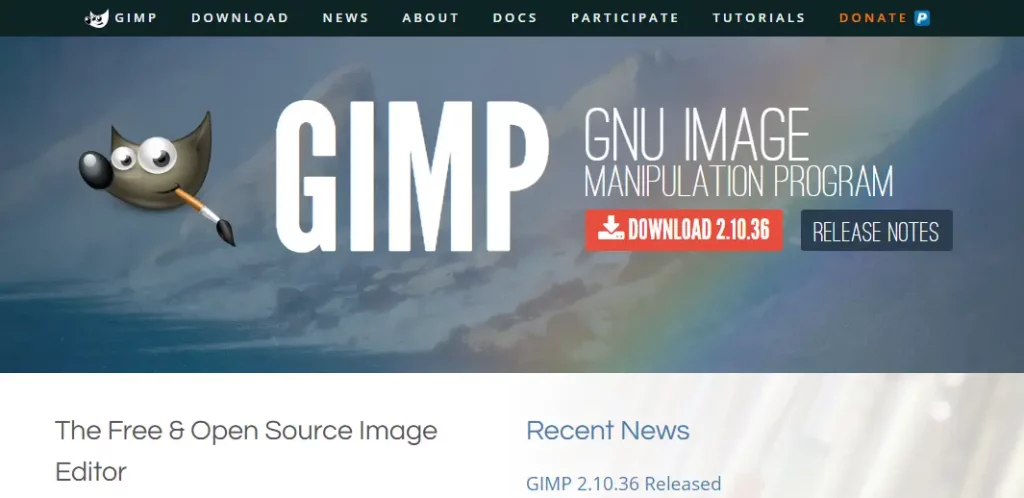What is GIMP?
GIMP—in full, GNU Image Manipulation Program—is sophisticated and advanced free open-source image editing software. It covers a vast area of creative uses from simple photo retouching to complicated projects in graphic design.
Main GIMP Features & Advantages
Advanced Editing Tools
GIMP offers a full package of tools for retouching, editing, and composing images within one convenient application.
Customizable Interface
The intuitive and customizable interface allows the user to fit the workplace to best suit their particular workflow, thus ensuring speed and ease in working.
Advanced Filters and Effects
GIMP contains numerous filters and effects that can be applied to images; hence, this lets the user give his creative works characteristic touches.
Support for Varieties of File Formats
One of the strong points of GIMP is the support of a great number of file formats, making it easily compatible with different creative needs and allowing working with multiple types of images.
GIMP Use Cases and Applications
Considering GIMP’s versatility, it can be applied to a broad range of uses in such industries as:
Photography
With GIMP, photographers are able to perform basic photo editing manipulations that include cropping, color correction, and minor retouching.
Graphic Design
Graphic designers have the powerful tools of GIMP with which they can create stunning visuals, logos, and complex designs.
Web Design
It lets web designers create different web graphics, design various elements for their website, and optimize images to load faster on the web.
Education
Educational institutions make more use of GIMP as a teaching tool for their students learning about image editing and graphic design, since it is packed with features and is free of cost.
How to Use GIMP
Step 1: Download and Install GIMP
Go to the official website of GIMP, download it, and then install it by following the installation instructions provided.
Step 2: Get Oriented around the Interface
Once installed, take a closer look at GIMP’s interface. Be sure to adjust the layout according to your workflow, as this will make it much more intuitive for you to work through and find any tools you may need.
Step 3: Import and Edit Images
Import images into GIMP and start editing using advanced editing features.
Step 4: Explore Filters and Effects
Play around with many different kinds of filters and effects to make your images just that little bit special. You can try a wide variety of filters and effects to add something extra special to your photos.
Step 5: Save and Share Your Work
Save your creation in multiple file formats once you feel you are through with the editing, and distribute these products across the board, as you may like.
How GIMP Works
GIMP is based on a modular technology with which several plugins and extensions are integrated within the core. Flexibility in the architecture of this software makes it possible to extend the functionalities by users as per their requirements. Advanced algorithms and models form the backbone for its core editing features like image manipulation, layer-based editing, path tools, and selection tools.
Advantages and Disadvantages of GIMP
Advantages
-
Cost:
Free open-source software, GIMP is an extremely affordable option for high-quality picture manipulation. -
Flexibility:
The highly customizable interface and the support of a wide range of plugins make GIMP very versatile in terms of various user needs. -
Community Support:
A very large user and developer community means ongoing improvements and support for users.
Cons
-
Learning Curve:
Though full-featured, GIMP has a steep learning curve—very steep for those with no background of working with image manipulation software. -
Performance:
GIMP may not work as smoothly or efficiently on occasions compared to some of its commercial counterparts, particularly when working with big files.
Conclusion about GIMP
In summary, GIMP is a robust, free, open-source image processing environment packed full of functionality for an array of creative purposes. Once the initial learning curves are out of the way, the level of flexibility along with support from the community makes it a very useful package for photographers, graphic designers, and web developers alike. With active maintenance in place and a committed development team, GIMP has continued to improve its position as one of the most viable and stable image manipulation solutions available.
GIMP FAQs
On what platforms does GIMP run?
GIMP runs essentially on Windows, macOS, and Linux, hence reaching the greatest number of end-users.
Industrially, is GIMP good enough?
Yes, GIMP provides advanced tools to both amateur and professional needs; therefore, it is suitable industrially in those fields.
Where to find GIMP tutorials?
There are a lot of them online, on the official GIMP website, YouTube, and other education platforms as step-by-step guides and hints.










